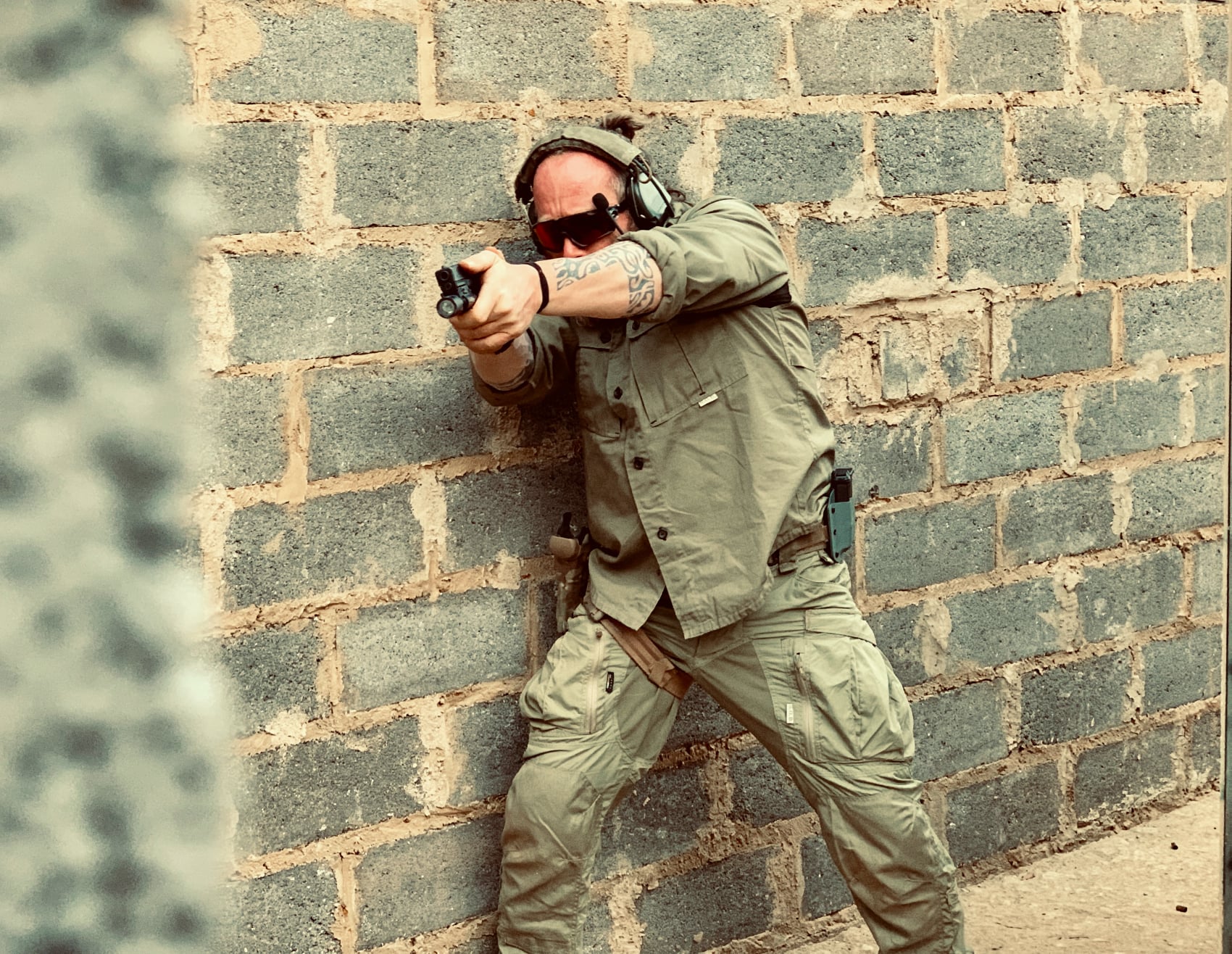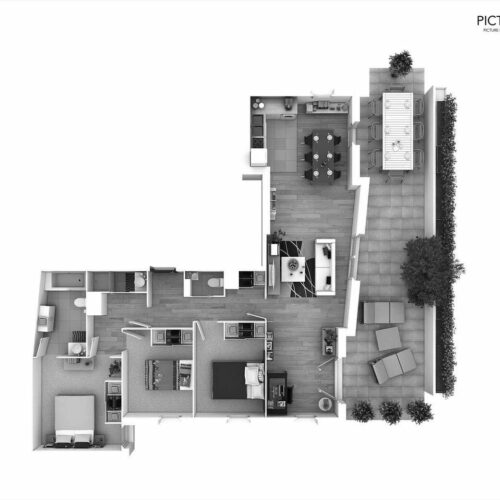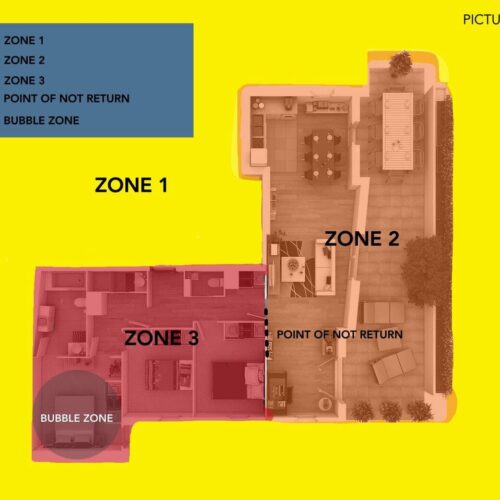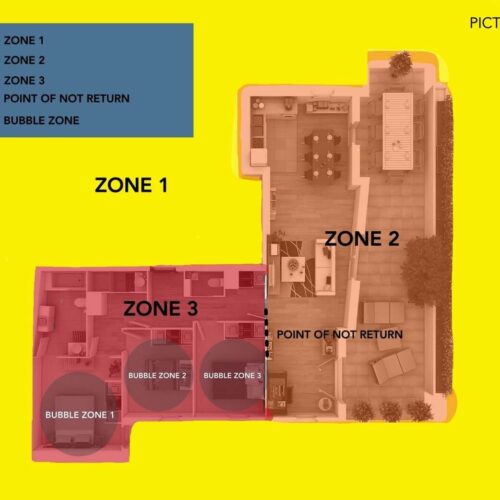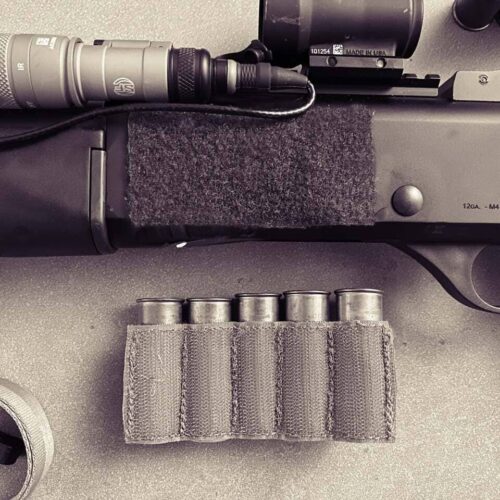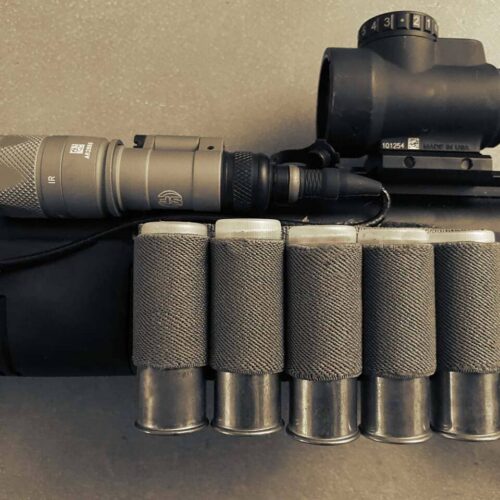The Home defense with a firearm is perhaps one of the most complex and at the same time most underestimated applications in the field of firearm defense.
About home defense I have really read all kinds of things, from the most sensible and serious to the most stupid and improbable ones.
The main mistake that is also what normally tends to make this application underestimate is given by two common but wrong evaluations:
- The fact that being our home, we believe we have full knowledge of the space and absolute control of it.
- We believe that point one is a huge advantage over any kind of threat coming from the external environment.
Unfortunately things are not like this and if there is an objective advantage in the knowledge of the environment (our home) this will not be during a critical event (only in little part), but it can possibly be so only if careful work has been done upstream. planning.
The second part of the error consists in considering a possible threat only in the external-internal relationship and not also in the internal-internal relationship which is the most complex condition.
Let’s try to understand better when we talk about Housing Defense what we are talking about.
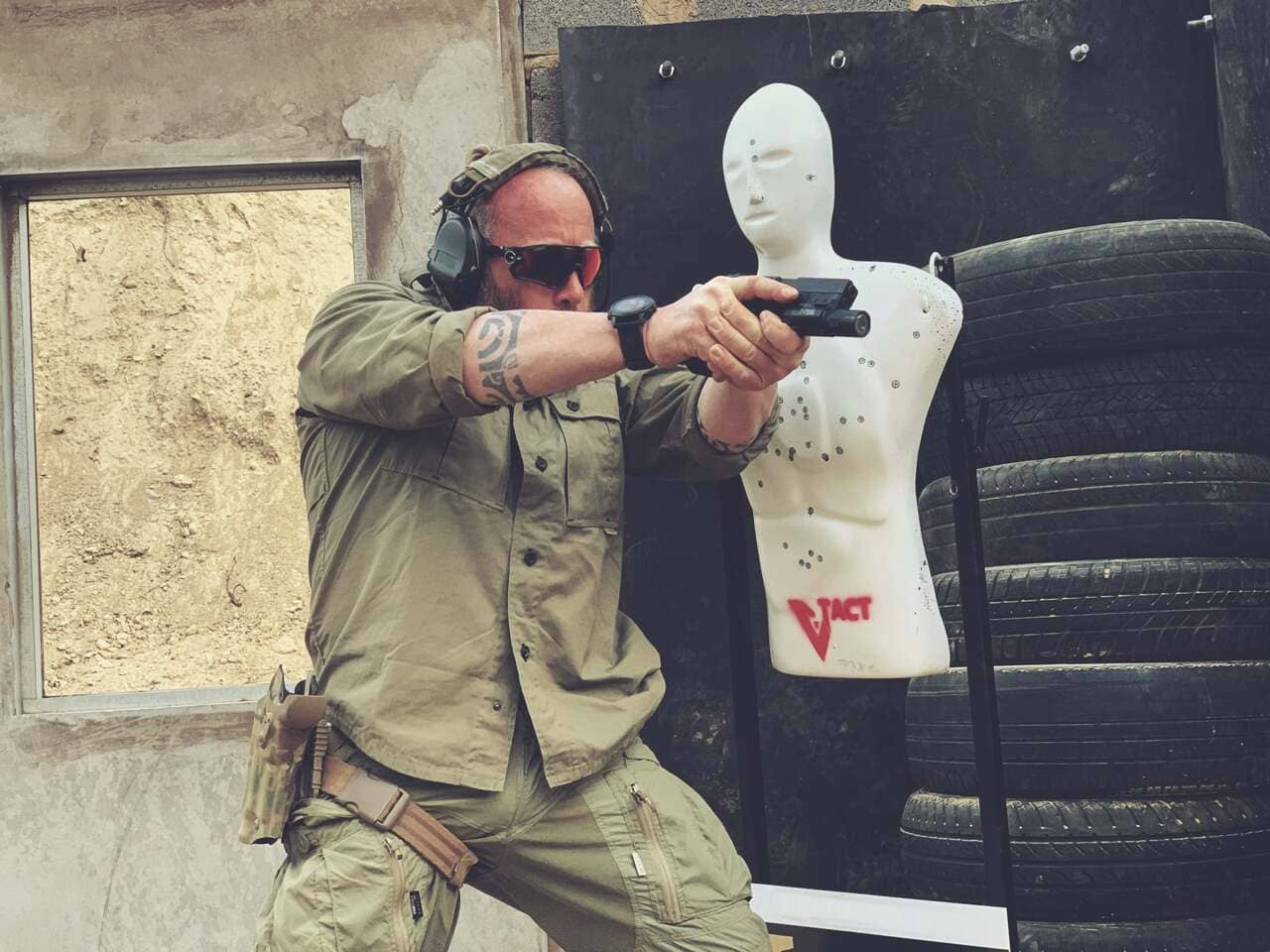
The Structural Diversity
As for everything else, even for the Home Defense we can’t have a general standard as there are a series of fundamental variables that make this application extremely fragmented, vast and diversified.
The first macro dynamic that we will have to evaluate, as it constitutes one of the essential variables is the structural one.
This is an extremely important variable and in the meantime it originates from the type of macro environment or context we are talking about. For example, if we compare the average tipology of houses in the United States, the structural characteristics of the same are profoundly different from those in Europe, this from the point of view of materials and from an architectural point of view.
I define this as an indirect variable, as it is the context that defines some of the general characteristics regardless of the choices we are going to make.
However, in both macro environments/contexts, there are also a series of structural variables, such as the type of house, or if we are talking about a single and isolated house, a villa with a garden, an apartment, a country house or an apartment inserted in a condominium, in a building or in a skyscraper.
All these are direct variables as they respond to choices made and directly define the structural typology of the housing unit itself.
The structural housing diversity is one of those dynamics that most influences (or should) in the choice of the defensive strategy and can also influence the choice of the type of firearm.
The Micro Context
The second macro dynamic that we have to analyze is the micro context, that is the restricted territorial context and the morphology of the territory in which the house is located.
There are normally some parameters that must be taken into account in order to evaluate this macro.
The first is the type of population density of the area in which our home is located, this parameter I usually divide into 5 different levels:
- Isolated (e.g. rural context, wooded area, mountain context)
- Low Density (residential or industrial areas)
- Medium Density (small villages, towns, counties)
- High Density (city, metropolis)
- Critical Density (megacities, favelas, shanty towns)
The housing density is usually directly proportional to the density of the population in that specific geographical area.
This is a parameter that we must take into consideration because it determines the risk of collateral damage, in fact the greater the housing density, the lower the distance between the houses, the greater the number of residents, the greater the risk of indirect collateral damage.
This macro dynamic influences the choice of the type of firearm, caliber and and the type of ammunition .
“Legal Autonomy” in Home Defense
This is the third macro dynamic that we are going to analyze.
As for the other two previous ones, also in this case we have legal conditions and autonomies that can be totally different from each other depending on the country of reference.
The home defense is essentially an application of legitimate defense, a right that is normally regulated everywhere, by laws that can be different and that as such generate different autonomies, but which are basically all based on the same principle, that of being able to defend oneself from the attempt implemented by someone else to deprive us of our fundamental right which is life.
That said, this macro combined with the first two is fundamental to define the defensive strategy and this too can influence the choice of the type of firearm in our application.
To be clearer, the legal autonomies that a citizen has in the USA are different from those that a citizen has in most of Europe, but there can also be regulatory differences between one US State and another in terms of autonomy with firearms and the consequent home defense dynamics.
For general information, the main differences between the USA and Europe in terms of legal autonomy in home defense, originate not so much around the firearm laws but within the concept of private property and the type of laws on the matter, one day maybe we will discuss this point in greater depth.
So this macro basically suggests what autonomy we have and what we must maintain in our defensive strategy in order not to commit, during our defensive actions, a more serious crime than the one we are defending ourselves for.
Criminal Dynamics
This is the fourth and last macro dynamic before entering the direct strategic part.
Here too we must consider that the criminal dynamics that we face can be extremely different from place to place, not only at the macro-context (Country level ), but also at the micro-context level. I try to explain it better, the criminal dynamics with which a citizen of Johannesburg must confront are profoundly different from those which a citizen of London, Florence or San Antonio Texas he will have to confront.
At the same time, however, we can have different dynamics even within the micro context, a Chicago citizen living in the Austin or Englewood neighborhood will have to face different criminal dynamics from those who live on the North Side such as Lincoln Square or Roscoe Village.
In South Africa as in many areas of South America for example, in terms of home defense, one of the most complex dynamics that citizens have to face is the fact that often it is not a question of thefts, but of real armed assaults , from part of criminal gangs or armed groups that attack homes, villas and farms with extreme violence, assault rifles and even jammers .
This macro absolutely determines the defensive strategy to be applied and in part also the type of firearm, caliber and type of ammunition.
PART TWO
After analyzing the 4 introductory macro dynamics, let’s get into what is the core of the matter, that is the analysis of the fundamental parameters to define the defensive strategy.
We will also analyze which are the main problems we will have to face related with the Home Defense, then we can evaluate the type of firearm, the caliber and type of ammunition to be used.
The 4 Fundamental Zones
Whenever we have to plan, analyze or create dynamics that have a specific goal, the first thing we have to do is always to break down the elements into sub-sets. This is a principle that I have learned to apply since I started studying Risk Analysis and that I have continued to apply daily in my work, during every single assignment planning, what is commonly called Mission Planning.
Having to create our home defense strategy, let’s start with creating 4 incremental Zones by dividing our overall area of interest into 4 sub-zones. In this way we will be able to analyze and plan each dynamic with greater precision and detail, not only that, we will treat each area individually by analyzing its structural, functional or strategic criticalities and we will identify the advantages and disadvantages of each single element present in that area.
By analyzing each area individually we will also be able to understand the report between the level of criticality and what could be the costs to structure the appropriate security measures, thus optimizing the budget according to the correct priorities.
The division of the area into sub-zones follows an incremental principle in the external-internal report, starting from the security measures to the countermeasures that we will adopt in case of a critical event relating to an intrusion.
ZONE 1 will therefore be the external area and will end with the perimeter of our home.
ZONE 2 will consist of the areas of the house with the exception of the sleeping area where the bedrooms are located.
ZONE 3 will therefore be made up of the sleeping area and the threshold, the door, the stairs or any other element that divides the rest of the house from the sleeping area, will be for us the fatal threshold, “the point of no return”.
The fourth sub-zone is what is called BUBBLE and is represented by our bedroom, if there are more people in the same house who occupy more bedrooms, each must be considered a sub BUBBLE
The fundamental thing to understand is that regardless of who occupies the other bedrooms, BUBBLE 1 is always the one from which we expect to start the “Reaction” to the critical event.
Obviously the sooner we are able to detect and track an intruder or an attempted intrusion, the more time we have available to evaluate, rationalize and react effectively.
If, on the other hand, the contact or the intruder is detected only when it is in ZONE 3 or inside the BUBBLE 1, the evaluation/reaction times drop drastically and the risk increases exponentially.
Security Measures and Counter-Measures
Today the market offers a very wide range of anti-intrusion systems and security technologies of all kinds, in terms of applications and costs.
The security measures that we can adopt to detect an intrusion attempt or to prevent it are basically divided into two types: PASSIVE AND ACTIVE.
PASSIVE measurements are all those systems, sensors, barriers, cameras, which detect a presence, a movement, a noise, any alteration of the parameters set in the system setting and which react in an integrated way according to the function they have.
They are defined passive systems because none of them is able to physically prevent or block the intrusion of a subject into our house.
ACTIVE measures are all those measures such as bars, gates, armored doors, fences, barbed wire, fortified rooms, fog or gas generator systems, all those measures that are able to physically prevent or block the intrusion of a subject into our house.
Having an anti-intrusion system mainly based on passive measures, can only be valid if you are sure of extremely rapid response times by the police. If, on the other hand, we are talking about an isolated area or where intervention times are much longer or not even definable, I do not recommend basing the system only on passive measures.
The right combination between the two types of measures, compared to the analysis of the 4 fundamental dynamics and the definition of the 4 Zones, should lead us to reach the 3 strategic objectives on which we should base our defensive line.
- Detect the presence of an intruder or an attempted intrusion as soon as possible and in the most peripheral area
- Gain as much time as possible to activate direct counter measures, manage BUBBLES and alert the police while maybe you are monitoring the ZONES through video images in real time.
- If possible, mechanically prevent the intrusion from ZONE 3 to ZONE 2, if not possible limit it and contain it in ZONE 2.
A fundamental parameter to take into consideration is the actual average time, necessary for the police or medical assistance, to be able to intervene at our home.This tells us the time in which we will have to resist in the event of an intrusion, the time in which we will be alone to face the threat and any other emergency, including the medical one.
The analysis of the 4 fundamental dynamics will give us a projection of which could be the actual intervention time.
Be realistic in your estimates and if you have a variable, always plan for the worst case scenario.
The Micro Ballistic Environment
With micro ballistic environment, we are going to define the characteristics in terms of ballistic interaction that our environment (HOUSE) has and we will do it for each single zone, obviously giving as absolute priority zone 3 and the relative Bubble or Bubbles present.
This is also one of the main discriminant in the choice of the kind of firearm, caliber and type of ammunition to be used.
The two main critical dynamics that we will have to face at a ballistic level are accidental or collateral penetration and rebounds in an internal – internal or internal- external report.
Obviously, if we live in an isolated area with a low population density, the risk of an internal-external collateral for accidental or collateral penetration is very low or it’s none.
If on the other hand, we live in an area with a high population density, perhaps in a building or condominium, we must also consider the concrete risk of an internal-external potential collateral.
The type of walls that make up zone 3 and the location of the rooms (bubbles) are crucial to understand which of the two critical dynamics (penetration or rebound) is present or prevalent.
For example, if we have walls of wood, plasterboard or material that we know do not have ballistic containment in the sleeping area or to separate the various bedrooms and we do not live alone, the problem of accidental or collateral penetration is a priority problem.
If on the other hand our walls are made by reinforced concrete, if we have load-bearing walls or rock walls as extremely common in rural houses in Europe, the main problem could be the rebound.
Having said that, we must add that every internal door usually made of wood is a critical point related to the high risk of unintentional or collateral penetration related with the internal-internal report, as every window is a critical point for the same reasons but related with the internal-external report, unless it is a question of doors or windows that have a ballistic containment.
PART THREE
In the next 2 parts we will cover also the points related with the 2 most frequently questions relating on which is the best firearm for Home defense or if is the Shotgun, the most appropriate one.
I know it’s long, but this is, if we want to cover properly the main dynamics of the matter, for me it’s an hard work, especially because i do it in a language that isn’t my native language.
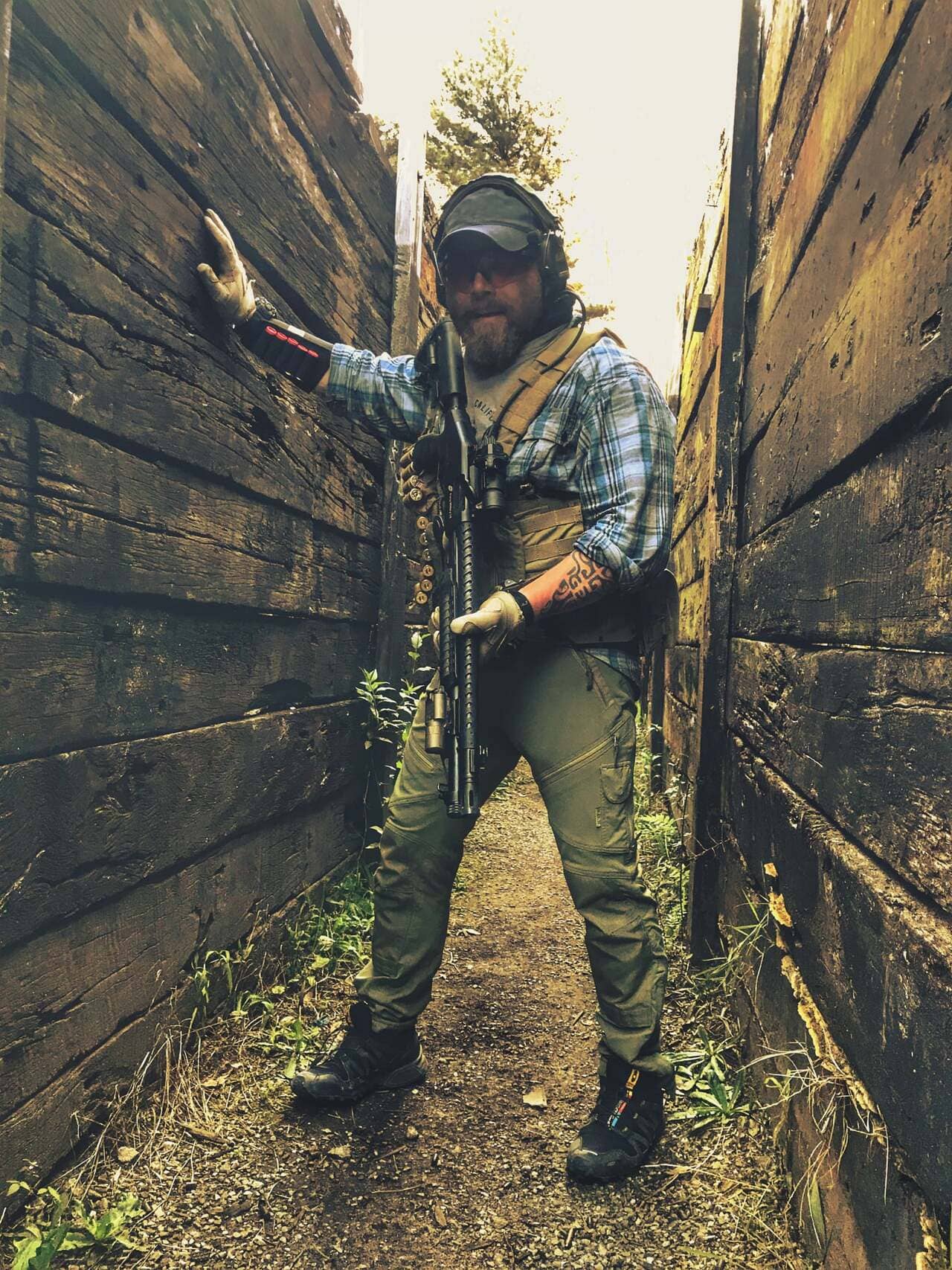
The Conditions We Need To Face
When we talk about Home Defense we are talking about a comparison that will mainly take place in closed and confined spaces, in 3D artificial environments and therefore with typical CQB dynamics.
Now if we consider by logic that the “house cleaning” with an armed subject inside it is very complex and risky even for an entire SWAT TEAM who constantly trains in this type of application, let’s imagine how much it can be for a single person, who may never have not even attended a CQB course and that perhaps in addition to an armed intruder, he also has his own family inside the same house.
Every time I hold conferences about home defense, I read infinite amazement in people’s faces when I tell them that in the case of an intrusion, “their home” is no longer just “their” but becomes an aseptic space for confrontation, in which it is the life of a single person or of the whole family is at stake.
If on one hand we have the advantage of knowing every inch of our environment, every noise, every nuance, on the other hand we may not know exactly where the intruder (threat) is, whether it is a single subject or multiple subjects, if the subject is armed or unarmed, what are his real intentions or if for example he is under the influence of drugs.
If one day we are forced to defend our life and our family with a firearm, there will be nothing cool in what we will do, nothing as beautiful or fascinating as when we were listening to war stories, gunfights, secret missions told by someone else perhaps during some tactical course we attended or simply over a beer.
Almost always we will be thrown into the worst nightmare, all the cool phrases, the tactical clichés, the perfect theory of the shooting range will vanish leaving room for the harsh and imperfect reality, made up of unexpected events, in which nothing goes as we expected or as we thought it was.
We will be alone in front of someone ready to take our life and maybe ready to hurt our family too, we will not be able to stop the action, call a time out, we will not be able to repeat if we are wrong, if the error is substantial we will come killed and we will join that number in the statistics indicating the victims of violent crime.
We will be forced to react under the highest psychophysical, physiological and emotional alteration, due to the stress process, with some of the worst conditions, such as low light, close range, threat discrimination times close to a sub-second and maybe with the rest of the family reacting in an irrational and disordered way, generating dirty lines of fire or potential ballistic collateral.
We will miss the air, it will seem like we cannot breathe, we will feel all muffled, our heart will beat so strongly that it will seem to come out of our chest, we will shake, we will have zero salivation, we will have sweaty hands and YES, we will feel the deepest fear.
There could be chaos, loud noise and smoke due to gunshots, if we have other people in the house there could be screams, we will probably also under acoustic shock.
In all of this we will have to maintain concentration, rationality and control of our firearm, in all of this we need to be efficient in our actions, in all of this we nee to take care about each single member of our family while we are dealing with the intruder/s:
Our brain will have to spin at a crazy speed, because the amount of information, solicitations and stimuli it will receive will be enormous and will have to be analyzed in frames of a second.
This is and remember that this could be the best case scenario, because the worst one could be written by the coroner and could be referred to you.
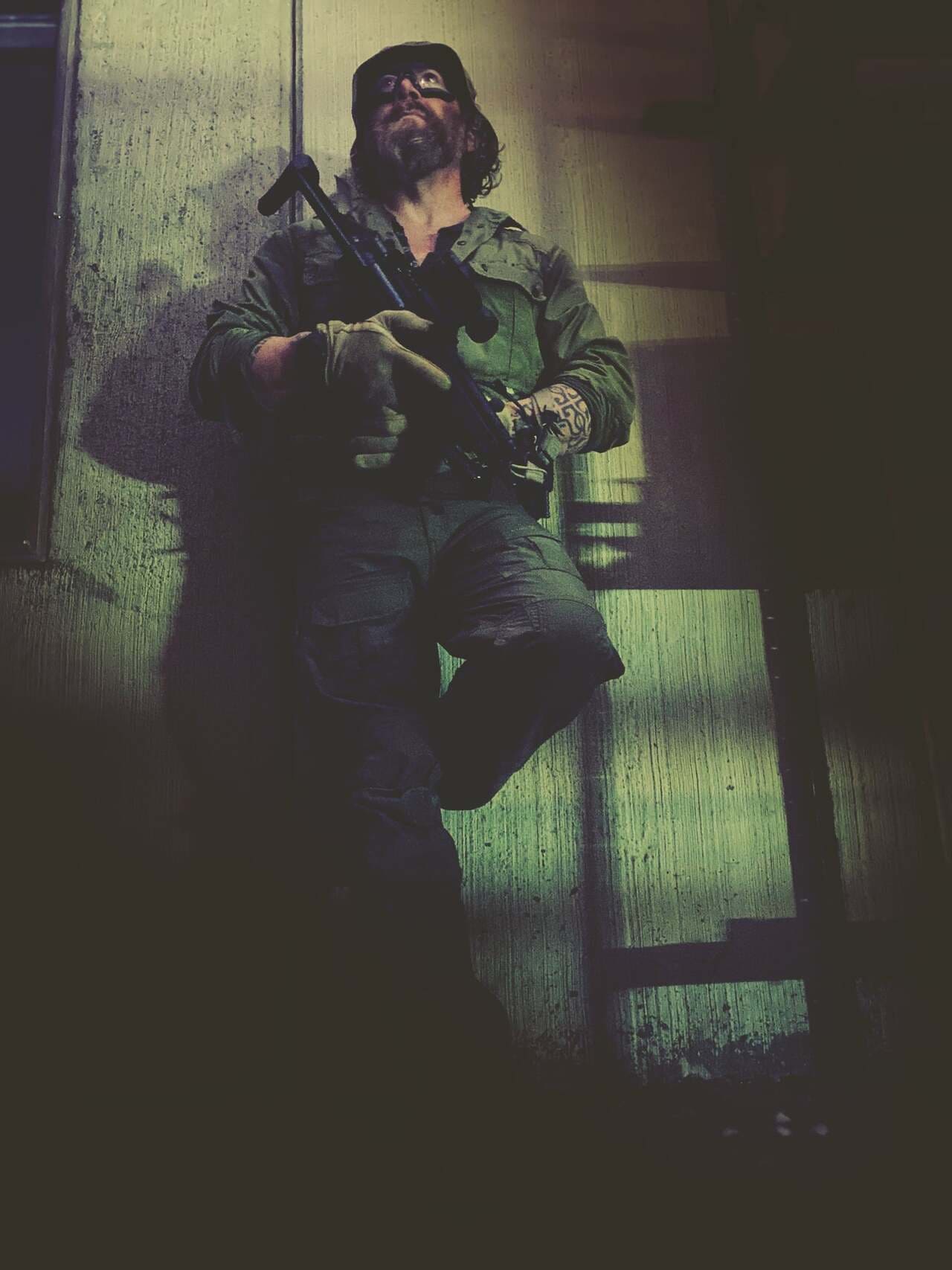
The Breathing Control
Breathing control is fundamental during any critical event, especially because we do not know how long the event or the confrontation will last or if we will have to face a physical effort that will require an even more oxygen supply.
One frame of a second after being involved in the stress stroke, our breathing will change and the oxygen cycle will undergo an alteration as important as the entire physiological plane.
We will seem to suffocate, we will breathe heavily even if we have not made any physical effort and this is where we will have to intervene promptly and effectively.
We will have to breathe correctly by carrying out our deep breath IN through the nose and our controlled exhale OUT through the mouth (Nasal breathing).
Unfortunately, during the acute phases of stress the phenomenon of “air hunger”(induced by central nervous system) is generated and therefore we will have the impulse to reverse the breathing cycle and carry out the IN and OUT from the mouth (Oral breathing), in this way we will have the sensation of breathing better being able to capture more air with our mouth, but it is only an apparent sensation since the lungs extract oxygen from the inhaled air especially during exhalation, increasing the respiratory rate we reduce the oxygen absorbing.
If we exhale through the mouth, the passage of air is facilitated, so there is not much air left in the lungs and the oxygen taken in is drastically reduced.
We will then apply the “tactical breathing” (deep breath IN from the nose until the rib cage is fully expanded, then we will retain the air as much as possible, maintaining the thoracic extension and we will discharge the air in a controlled way OUT from the mouth).
In this way we will avoid hyperventilating avoiding the consequent hyperoxia or hypoxia which are absolutely common on subjects who are not trained to manage stress conditions when exposed to highly stressful events.
The effort that the rib cage makes in nasal breathing creates greater intrathoracic negative pressure, which reduces cardiac fatigue. By applying this type of breathing we will also work on the diaphragm and will help us to lower the heart rate. The supply of oxygen is also essential to maintain an effective cognitive capacity the hypoxia in fact would greatly expand the cognitive reactive time.
Compressed Spaces – Compressed Reaction Times
What makes home defense extremely complex are the extremely compressed spaces that automatically generate extremely compressed reaction times. The problem arises from the fact that in order for there to be an effective reaction to an upstream problem / danger / threat there must have been a process of analysis and rationalization of the information we receive in real time from our sensory interactivity with the environment and with every dynamics contained in it and consequently a decision-making process.
Let us try to better define this step because it is the fundamental key to the main problem linked to home defense and the possible legal consequences:
If we find ourselves involved in a critical event inside our home, we will be forced to make irreversible decisions, which could change our life and the life of our family forever or worst they could kill us in few moments .
It takes about a second or so to cover a distance of 15 feet (4.5m) and it takes less than thirty hundredths of a second to press the trigger of a firearm and this applies to both sides, the criminal and us.
However, there is a substantial difference in reaction time between us and a criminal in the decision making process that leads to pressing that trigger. In fact, the criminal must not carry out any process of assessing the conditions, he must not assess whether he has the conditions to be able to use the firearm or not, if we are armed or unarmed, he has already made that decision when he chose to commit a crime by breaking into our home with a firearm.
A criminal who sneaks into our home with a firearm or any other weapon is not a thief, but a potential murderer, the question is how much time we will have to figure it out.
Usually at this point the cliché that is most popular is the one that says: “better a bad process than a nice funeral”, I always add that one does not exclude the other and that if we do not operate with extreme attention, caution and efficiency, especially if we live at home with our family.
If we have pressed that trigger, who will judge us, will instead do it comfortably seated in a courtroom, in total tranquility with all the necessary time available.
He will probably do it years after the fact and without having the slightest idea of the emotional state, of the psychophysical alteration, about of the pressure of the fear and about of those few hundredths of a second that we had in which we had to make that fatal and irreversible decision.
No judge, jury, expert will ever really be able to reconstruct the emotional state and psychophysical alteration of those who made the decision to press that trigger. The most common mistake often committed by the judging authority is to retrace the events , evaluating them coldly, calmly and being in possession of all the elements that emerged from the investigations, many of which could not be known by the subject at the time he made that decision, especially with respect to the extremely compressed time he had available to evaluate the condition: threat/danger/reaction.
PART FOUR
How to Choose the Proper Firearm for Home Defense
This is the most popular question, the one which i receive most frequently.
As I have said several times, the weapon is only a tool and the difference is always made by those who use that tool and never by the tool itself.
So if you have a technical background or you are trained subject with a good technical level, you can use basically any type of firearm, even if there will be some more suitable and others less suitable depending on the conditions and needs of your context.
What should guide us in choosing the proper type of firearm, caliber and ammunition to use, especially if we are subjects who do not have a technical background or a solid technical preparation, is based on two levels of reasoning: one it’s based on the plan of simple logic and common sense the other it’s based on the technical analysis of the dynamics and parameters related to our macro/micro environment.
So far we have defined Home Defense as a very complex application that requires considerable technical ability.
However, we must remember that for each choice we will do, we will always find pros and cons, therefore advantages and disadvantages, it is up to us to understand what could be more effective for our needs and our environmental conditions.y, so I would say that the first discriminating parameter for logic and common sense is to use the firearm that we know how to handle best, the one we are most trained with, the one with which we have more experience on the application.
If the logical plan suggests us to use the firearm with which we have more experience and ability, the technical plan through the fundamental dynamics tells us which type of firearm, caliber and ammunition would be more suitable for the type of macro, micro environment we have, considering also the structural characteristics of our house.
What could influence the choice of caliber and type of ammunition are also the laws related to firearms, civilians could be not allow to use certain calibers or certain type of ammunition, as happens in many countries around the world.
The most common mistake, however, remains to prioritize the legend of the “stopping power” compared to the problem of over penetration and rebound which can create a fatal ballistic collateral.
In general the “stopping power” is in my opinion absolutely relative, marginal and undoubtedly subordinate to the structural characteristics of our ballistic environment.
The Handgun
The handgun is certainly the most widespread and used firearm in the world in defensive application and therefore also in home defense.
Being a short firearm it is lighter and more manageable especially in confined spaces, but precisely because it’s “short” it is also the most complex and difficult to be used.
The choice to use a Pistol for home defense requires good technical preparation, I strongly advise against those who are novice or have no experience and technical competence to use a Pistol for home defence especially if you live with your family, independently from the caliber or from the mechanical characteristics of the pistol itself.
Having a rifled barrel, based on the caliber and type of ammunition that will be used, it has a potential ballistic collateral that must be carefully compared and evaluated with all the environmental and structural dynamics that we have described in the other parts of the article.
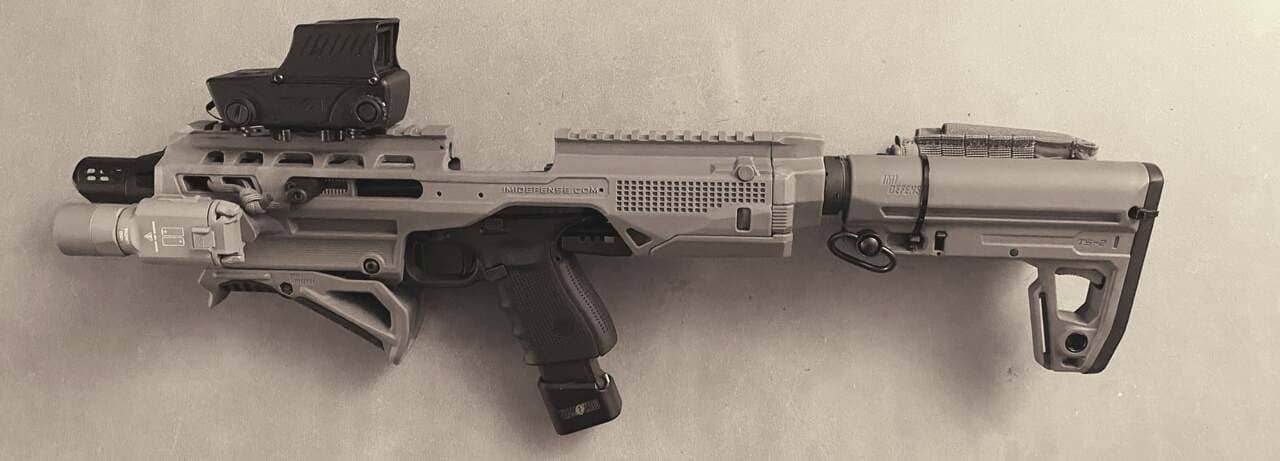
Accessories and Handgun Set Up
I think it is very i mportant, if you choose to use a pistol, for home defense to mount tritium sights, Red Dot optics that allow you to acquire an effective alignment in low light / no light conditions.
In my opinion, the second essential accessory of your handgun for this type of application should be the “weapon flashlight”. Essential to be able to discriminate and distinguish an intruder from a family member in low light conditions, to assess whether it is an armed or unarmed subject, essential for a ‘possible scan of the environment or if you need to go for “house cleaning” and useful in order to create a reactive delay in our opponent through the “flash” effect. choose to use a pistol, for home defense to mount tritium sights, Red Dot optics that allow you to acquire an effective alignment in low light / no light conditions.
Where and if the use of suppressors is allowed, it could help a lot in this type of application, it can prevent the ” flash-bang” effect on us, it cuts out the the direct acoustic shock and the muzzle flash, it reduces the noise of any shots which being enormous auditory stressors, they would immediately trigger an acute phase of stress (stress stroke) in our family members, generating on them in this way, unpredictable and irrational reactions and the consequent “chaotic condition” which is one of the worst case scenario we may face.
Another accessory that you can evaluate are the various pistol exoskeletons, aware of the fact that you are thus transitioning the manipulation from PISTOL to SMG with the pros and cons of this, certainly for a less experienced handgun shooters , the use of the exoskeleton with the right accessories it could be more suitable.
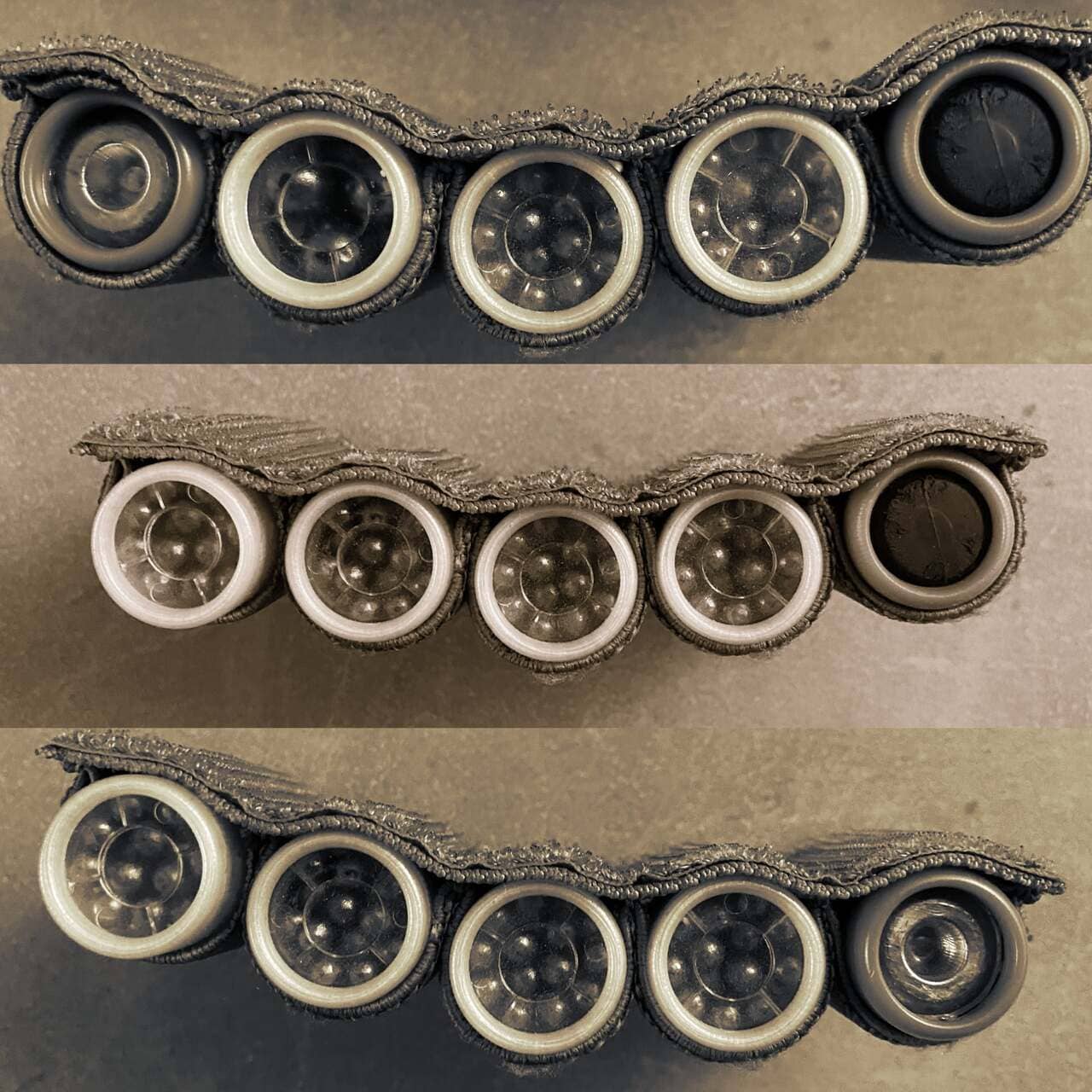
The “12 Gauge Shotgun”
Depending on the conditions we will have, this could be the most suitable platform for home defense both for an expert and prepared subject, but even more so, for an unprepared subject who would find enormous difficulties in the use of the handgun generating an exponential increase in the risk of possible collateral damages.
What makes this platform particularly suitable for home defense are 2 main aspects:
- The vast typology of ammunition that we can use and the consequent possibility of creating the “perfect load sequence” based on our environmental ballistic needs and in some cases also based on the attinence with local selfdefense laws .
- The lower application requirements in terms of technical skills and experience with the platform which are needed to the “shooter” compared to absolutely higher technical skills and experience which are required on the use of handgun in home defense application.
The ammunition available to the civilian market are extremely varied and range from less-lethal rubber, plastic, rock salt exc exc, to the birdshot usually identified by a number (the larger the number, the smaller the pellets, this also means larger numbers have more pellets per shell), up to the buckshot with different number and sizes and finally arriving to different type of Slugs.
The interesting and extremely effective thing is that we can prepare a sequence of loads following an incremental use of the force, depending on the level of threat we have to face or the ballistic morphology of our environment.
Anyway one of the most common mistakes of people who use shotguns is the fact that they do not know the essential aspects of the defensive manipulation of this platform or more often they didn’t have mastered those properly.
The use of the shotgun is basically quite simple but the loading systems, the ammo management, and emergencies are not and they require a solid work of training.
The 3 main manipulation dynamics with a shotgun are:
- a) the management of the magazine or tubolar magazine
- b) the ejection port management ( Emergency loads )
- c) the management of the type of ammo in real time
I know that to many of you in the US this will seem absurd, but in many countries where the laws of selfdefense are very restrictive or where judges offer often greater protection to the criminal than to the honest citizen, to have a firearm that allows you in a single sequence of cartridges to go from a less-lethal level to a lethal one, could be a huge advantage.
Obviously the evaluation of the conditions and the management of the type of ammunition always depend on our technical preparation, our experience, the conditions of the moment and the starting requirements.
Regarding the type of ammunition to use, with this platform we face the same problems as we face with the other platforms, which are the over penetration (collateral penetration) and the rebound.
Again i recommend you carefully evaluating the characteristics of the ballistic morphology of your environment, especially the ZONE 3, and to choose the proper type of ammo.
The technical characteristics that make this platform unique is precisely the fact that you can change the ballistic characteristics and the level of force applied from one load to another, from one shot to another.
Shotgun Set Up
The first thing I would add to the “shotty” is a good sling, preferably 2 points sling
I would then move on to a valid “weapon-flashligh” with solid attacks, because the platform has a lot of stress and the risk is that it detaches at the wrong time.
I would complete with a valid RED DOT, but it is not essential.
As shown in the photo, I would apply a velcro strip as a side loader pad to which I would then apply my “load sequences” in the base of my needs (as in the pictures).
I find this system more functional and practical than the classic rigid polymer loader pad.
Be careful how you attach or how you glue the velcro pad to the platform because the risk is that it will come off often, always check it before the use .
Personally i prefer short barrel and in general a compact platform
Birdshot VS Buckshot
This is a delicate question to be analyzed, because as always we have pros and cons on both sides, what in my opinion could make the difference in our choice, is the match of the characteristic of this type of ammo compared to the ballistic environment of our home and our experience with firearms.
BIRDSHOT: wider surface of impact ( bigger saturation ), less energy on the impact, less penetration, insignificant rebound risk, insignificant risk of a ballistic collateral.
Depending on the length of the barrel and on the size of the pellets in short distance the birdshot could have also a good stopping power, keeping close to zero the risk of a collateral penetration, penetration trough barriers or rebound.
Using consistent Birdshot in terms of size of pellets, i think it could be probably the best compromise between efficiency, consistency, stopping power and penetration control, basically zeroing the major risks like the over penetration ( Collateral Penetration ), rebound or external collateral damages .
WARNING: birdshot doesn’t allow a selective and accurate shot
BUCKSHOT: bigger size of pellets, less pellets for each shell, higher energy on the impact, higher penetration, smaller surface of impact ( less saturation, obviously depending also on barrel length )
Buckshot are more powerful and they have higher stopping power at major distances than the birdshot have, they generate an higher hydrostatic shock and they transfer major energy at the impact, but in short distances we could have higher risk of over penetration, penetration through barriers and rebound.
Buckshot could be a very good solution for some environmental conditions, but in my opinion their use it requires major experience and competence on side of the shooter than the use of birdshot .
WARNING: buckshot doesn’t allow a selective and accurate shot
Rifle / Carbine
The Rifle/Carbine is a platform that I consider extreme in this type of application, the use of which can only make sense in very particular conditions, in which we are, for example, exposed to the risk of a confrontation in large outdoor spaces (case of FARM, RANCH or very isolated houses with large external perimeters) or in the case of areas where there are criminal dynamics which involve aggression, robberies, home invasion by groups or heavily armed gangs.
For example, if we think to use some common rifle platforms in 556 NATO or 223Rem caliber, we should consider also that we are talking about highly hypersonic calibers which in small indoor spaces (like bedrooms, hallways exc exc) they could go beyond generating the simple acoustic shock, they can create real injuries to the eardrums if we do not wear ears protection.
The 300AAC/300BLK might be a good alternative solution better if combined with a good suppressor (where the civilians are allowed to use suppressors).
The problem of ballistic collateral, the over penetration and the rebound related with the caliber, the bullet’s speed, the high energy, the ballistic range of this kind of Firearms, makes them quite extreme in the Home defence application.
Rifle Set Up
In case you need to use a rifle as a home defense platform, the use of the sling is essential ( personally i prefer 2 points sling ), to this I would add a serious weapon-flashlight and a Red Dot or a variable Optic System according to the needs of the application and the environmental morphology.
I would pair the optic system or the red dot with a pair of tritium sights just in case of emergency.
Where permitted by law, I would definitely employ a suppressor.
Personally I would prefer a short barrel length.
Conclusions
Home defense is not something that we can think of managing when we have an intruder inside our home, home defense is a lifestyle, a discipline is planning and strategy.
It will not be enough that we train with our firearm at the shooting range, we will also have to work on the defensive strategy together with each member of the family, the more we will mentally and practically prepare them for a possible critical event, the better, more effective and faster theirs reaction will be.
Remember one last thing, you can adopt for your house all kind of security devices or technologies, making it impenetrable, but remember that every day you and your family will have to go out and in from there, and you could become their key to access.
Stay Safe, love you all!

